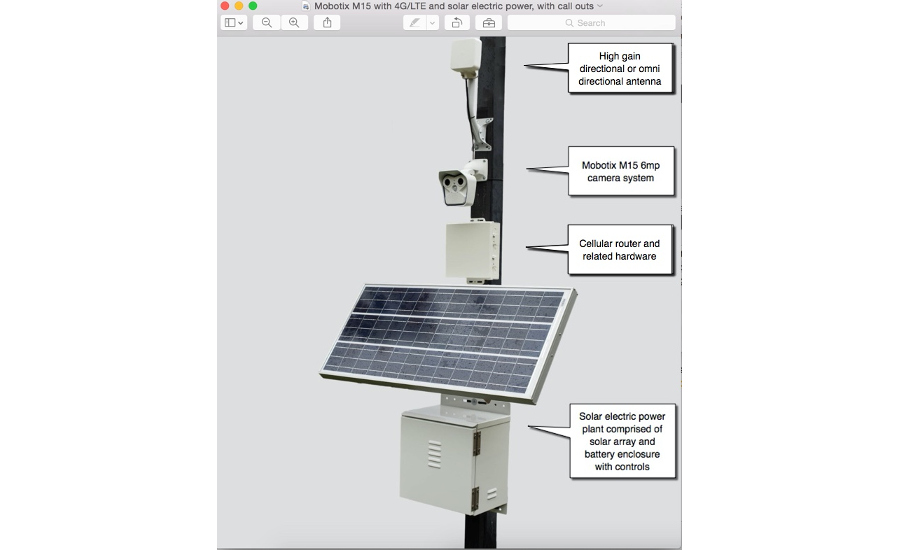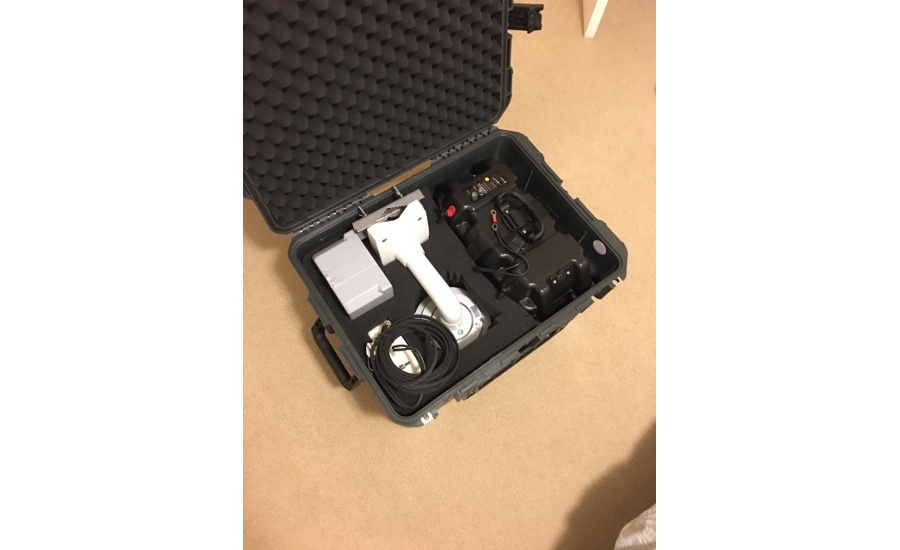Wire-Free Cameras for Remote and Unusual Applications



March 27, 2017
SDM interviewed Jeff Sandine, owner and consultant, RadiusVision, Seattle, about wire-free cameras that are often used in industrial locations that would be troublesome to reach with wires.
SDM: Describe wire-free, cellular cameras. What variations are there?
Sandine: The system types that I'm referring to are typically fully autonomous, real-time, live high definition IP video (and audio) systems. They may be solar powered for permanent or semi-permanent installations or battery powered for rapid deployment applications. Most often these system types use 4G/LTE connectivity.
SDM: What types of applications are these ideal for?
Sandine: Typical applications are any remote project or location that lacks utilities infrastructure, including: law enforcement and first responder situations, construction sites, scientific studies, gas and oil industry, disaster management, crowd control, and outdoor and public events.
SDM: What are some costs associated with these cameras that people should anticipate?
Sandine: A solar or battery powered 4G/LTE camera system that includes an onboard video management system (VMS) typically start at $7,500 - $9,500 (retail price). 4G/LTE systems require a static IP address, often a one-time fee of $500. Plus monthly data charges of $50 or more per month, depending on the amount of data used.
SDM: What are some unexpected issues you ran into along the way, and what solutions did you come up with for them?
Sandine: Price is the single biggest hurdle to these system types. Lighting is often an issue when powering with solar or batteries, as most cameras with built-in IR lighting are only useful to around 100 feet. If LED lighting subsystems are required for longer distances, these LED lighting systems require a relatively large amount of power. There are some workarounds to powering LED lighting systems with minimal power, such as using sensors/PIR devices to turn on lighting when an event has been triggered.
People often assume they can just stream a live camera via 4G/LTE. While this is possible, this tactic can result in very large cellular data charges. The workaround is to store most video on board the camera system and send just a snapshot of what triggered an event via 4G.
Most applications require that a VMS run on board the camera, or on an embedded fanless industrial computer.
Most cameras that people might be familiar with or be interested in purchasing due to low price, will not run a VMS on board. A few cameras that will run a VMS on board are Mobotix, AXIS and Avigilon.
SDM: What are some important technologies to look for in these types of cameras?
Sandine: Video analytics is one of the more important technologies that improves the effectiveness of autonomous camera systems. Thermal imaging works very well and solves the problem with lighting, but the price is often a barrier to implementing.
Be in the forefront of security intelligence when you receive SDM.
Join over 10,000+ professionals when you subscribe today.
SIGN UP TODAY!Copyright ©2024. All Rights Reserved BNP Media.
Design, CMS, Hosting & Web Development :: ePublishing